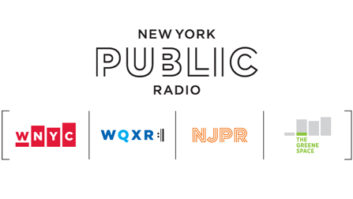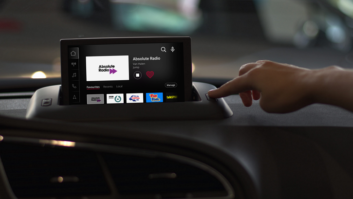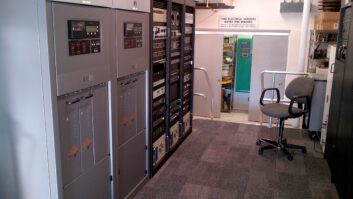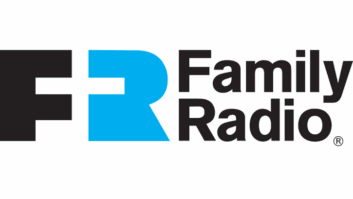This is an excerpt from our recent ebook on outstanding new studio installations.
After a whirlwind year of construction, All Classical Radio, KQAC(FM), has at last settled into its new home in Portland, Ore.
All Classical’s new headquarters — also dubbed the media arts center — is located on the third floor of the historic KOIN Tower in downtown Portland. It includes five production studios, modernized audio/video technology and a performance hall to foster community.
The noncommercial educational FM radio station and multimedia network boasts 98% locally-produced programming, including daily playlists, interviews, live performances, syndicated radio shows, podcasts and arts and culture specials.

Demolition and construction of the media arts center began in August 2023, and was completed just one year later in August 2024. KQAC flipped the switch and began broadcasting from the KOIN Tower on July 26, 2024, and has been operating fully from the new HQ ever since.
The media arts center is 15,643 square feet, which is roughly 3,000 square feet larger than All Classical’s former headquarters at the Hampton Opera Center in Portland’s Central Eastside district. The new space also used to be a movie theater, and the high ceilings in particular offer a lot of opportunity sonically, according to All Classical’s engineering team.
The network broadcasts on FM and HD-1 on five full-service stations including KQAC Portland (its main signal), in addition to two translators. All seven signals simulcast KQAC’s programming. All Classical also reaches international audiences via its online stream and is host to the International Children’s Arts Network (ICAN), which broadcasts 24/7 on HD-2 in addition to all seven signals.
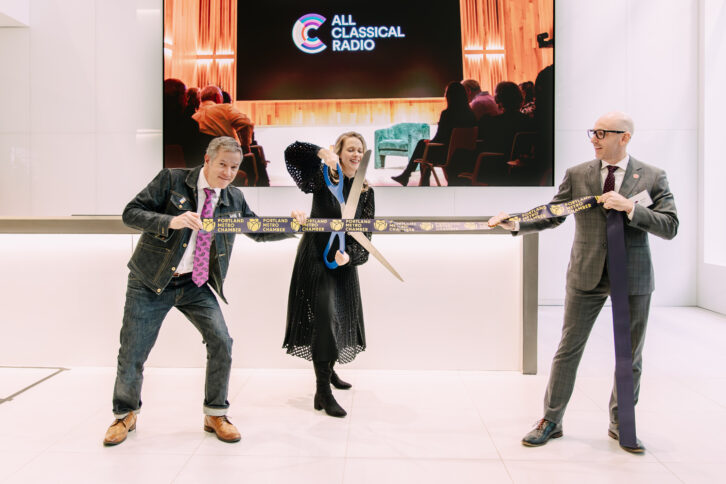
After a few months of preparation, finishing touches and test runs, All Classical invited community members to the public grand opening of its media arts center and broadcasting headquarters in December.
GBD Architects Inc. was charged with the art center’s design, including all of its studio spaces and the performance hall; Howard S. Wright provided all construction services and construction management; and ZTransform worked closely with GBD, Howard S. Wright, Listen Acoustics and Christensen Electric to integrate studios and design the layout and technical aspects of the center.
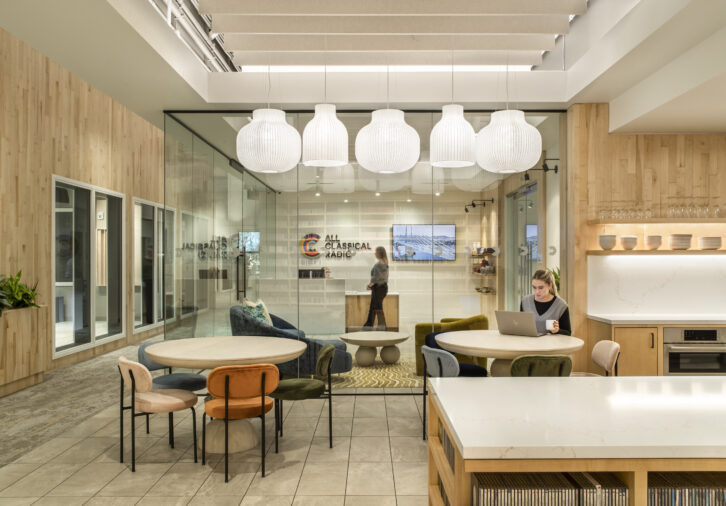
As is so often the case with construction, All Classical said the timeline of the technical build was extended to account for unexpected surprises. For example: raising the floors in certain areas was required for acoustical integrity and greater soundproofing. This meant additional accompanying ramps had to be built to ensure accessibility … which, of course, took more time.
“One big surprise was that the wood floor originally selected for our state-of-the-art performance hall floor was too heavy,” said Suzanne Nance, president and CEO of All Classical Radio. “Fairly late in the construction timeline, we went back to the drawing board — literally — to choose a different wood floor. This was an incredible collaborative effort between GBD Architects, Oregon Lumber Company, who donated the wood, and Ian Eikanas, the KPFF structural engineer who evaluated the integrity of the floor.”
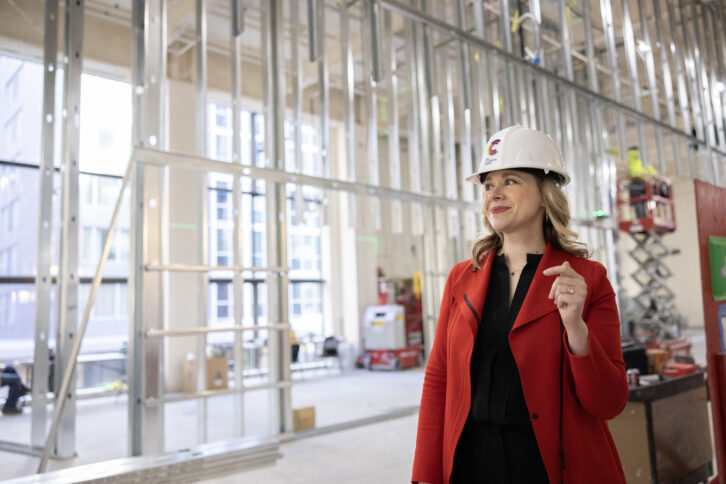
One positive development, however, in All Classical’s relocation process was the opportunity to negotiate and secure a favorable, long-term lease in the heart of downtown Portland.
“Not only does this benefit the station’s sustainability, but it also positions us well geographically to strengthen and expand the role that we play in uplifting the city and its creative communities,” said Nance.
With the technical buildout now complete, All Classical is highlighting several more-aesthetic features of the space — one of which is a wall of music displaying many of the CDs used to create All Classical’s daily playlists (now digitized), with a rolling ladder to access the albums.
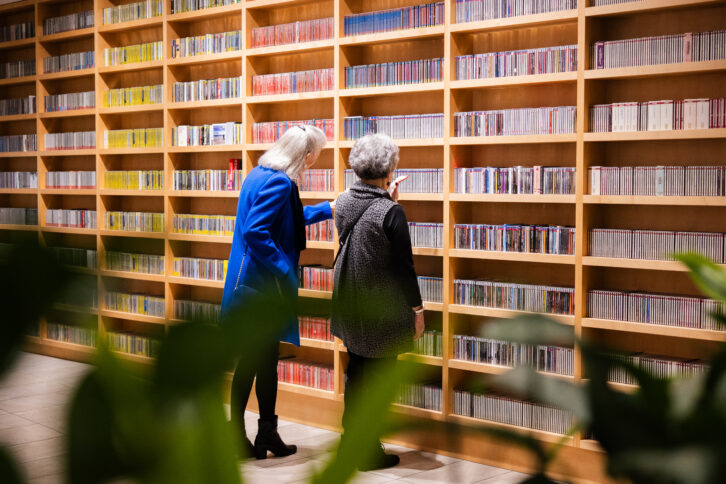
Also, right outside of ICAN’s “Studio Bee,” All Classical designed a lime-green reading nook, featuring a whimsical wooden tree, dangling fairy lights, an equally-colorful bookshelf and a comfy cocoon chair.
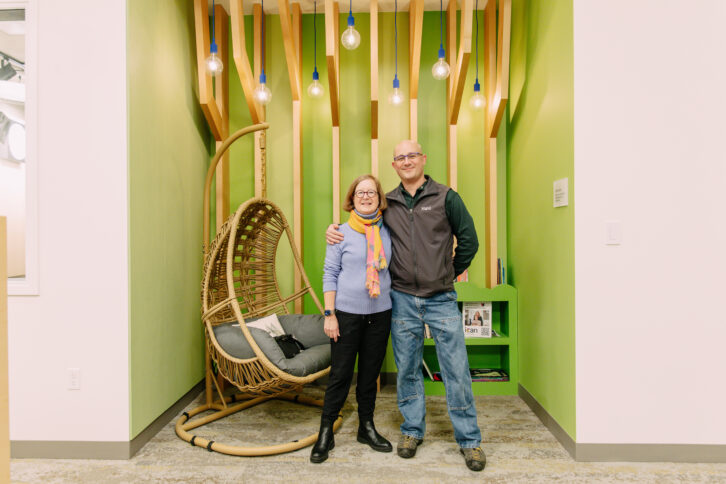
All Classical’s new Moonflower Studio is also designed for youth programming and mentorship — from the accessibility of the production desk (a lower height than others in the space), to the design choices in making a creative and playful environment, according to Nance.

“We finalized our office furniture choices with Environments NW in late 2023, and collaborated with Anthropologie for ancillary furniture and decor,” said Nance. “In addition to our core interior design, we are commissioning and working with local artists. One of our earliest and most exciting installations is by Mary Chomenko Hinckley, in one of our main gathering spaces which we call the Artists Lounge.”

[Related: “All Classical Radio Gains a Historic Headquarters“]
The overall vision for All Classical Radio’s new headquarters was led by the station’s management team: Nance, COO Matt Kovich, the station’s board of directors and Chief Engineer Mike Alston.
Taking the lead, Alston oversaw the technical planning and engineering buildout, which included production studio layout and equipment; operations center equipment; and the performance hall and adjoining a/v control rooms.
“We selected Axia’s AoIP system for broadcast and [an] ENCO automation system,” said Alston. “In the performance hall we have Grace Design preamplifiers, Dante audio routing, Telos Infinity IP Intercom Systems and an Allen & Heath mixing console. Our microphones in the hall are a collection of Schoeps, AKG and Sennheiser. We went with Electro-Voice RE27s for the production studio microphones.”

Alston also said the completed center includes more than 30 miles of cabling running throughout the building.
“The cable runs are quite long from room to room due to our high ceilings, which are around 22.5 feet,” said Alston. “In order to enhance the workplace environment, emphasizing natural light and open spaces, we chose to route all electrical and data conduits high up in the ceiling,” he said. “Our primary cable route is hidden quite nicely behind an open soffit at around 14 feet, easy to reach with a 10-foot ladder.”
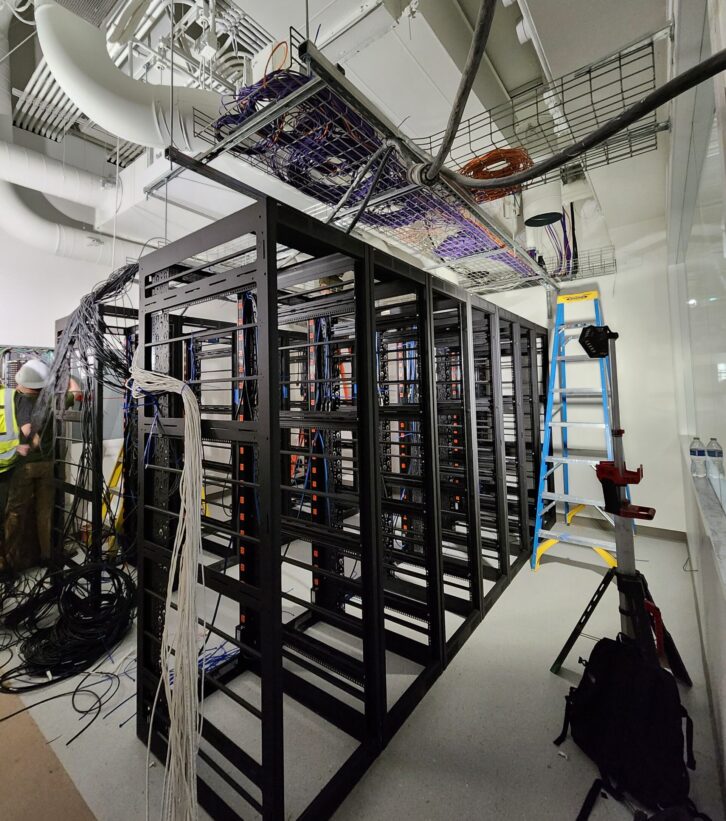
Alston said the 100-person performance hall cable routing was the most difficult to coordinate and implement due to the lighting grid, HVAC, sound paneling, fire safety systems and audio distribution system; however, “successfully finishing this part of the cabling and buildout was particularly gratifying.”

Nance said the finished product is “better than we ever dreamed it could be.”
“We have upgraded and modernized all of our technical system, and expanded our production capability in audio and video, while also creating unmatched spaces for community gathering around radio, art and storytelling,” she said. “All things considered — building a new media arts center, after a global pandemic, with economic and supply challenges — I think this was an extremely smooth and rewarding build.”
The total cost of All Classical Radio’s buildout and relocation is $11.5 million. To date, All Classical has raised $10.2 million, leaving approximately $1.3 million to close the gap on its capital campaign.
